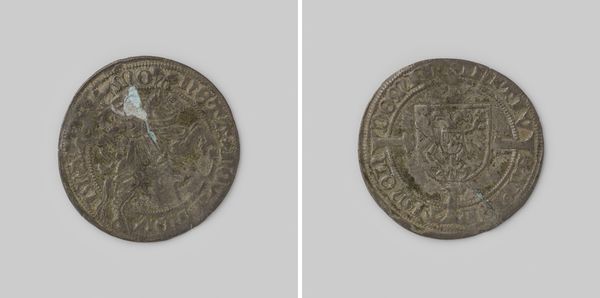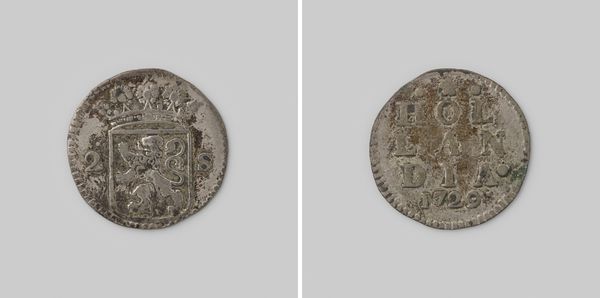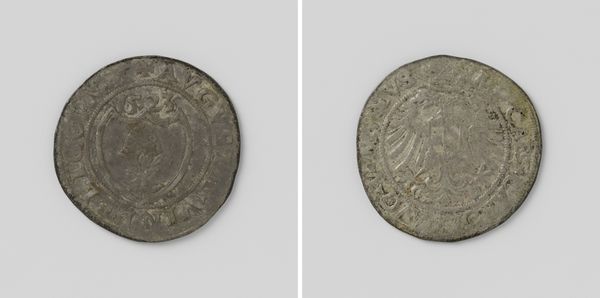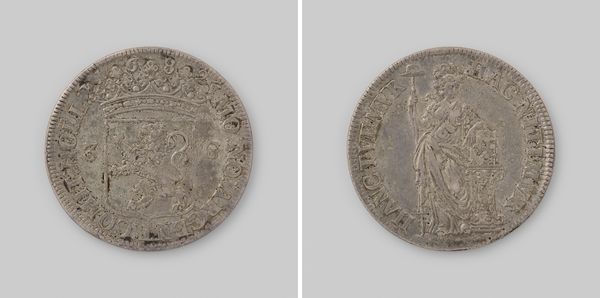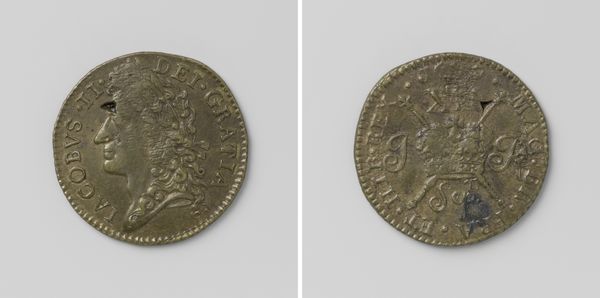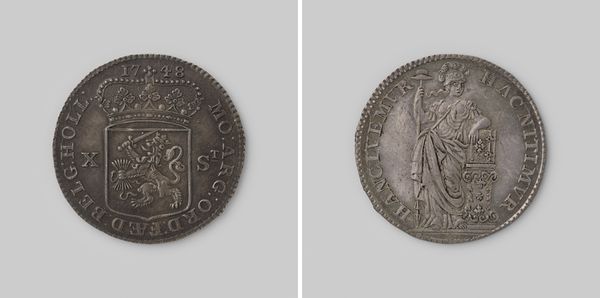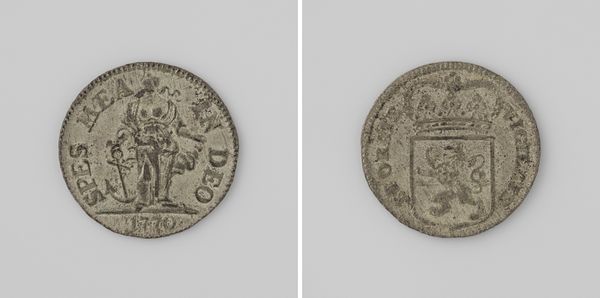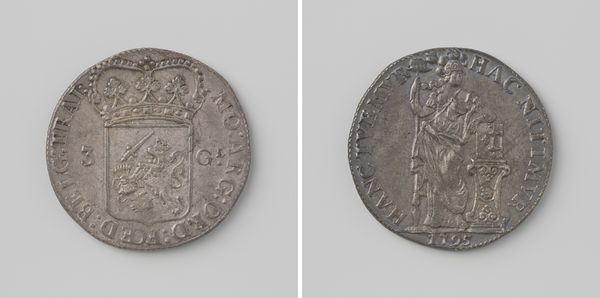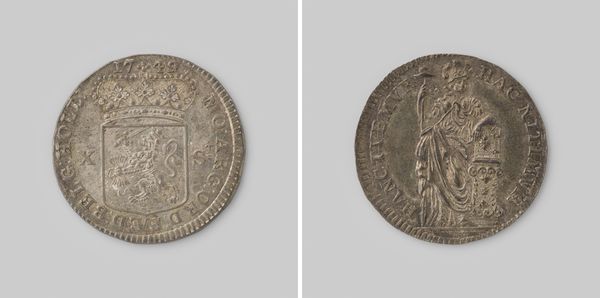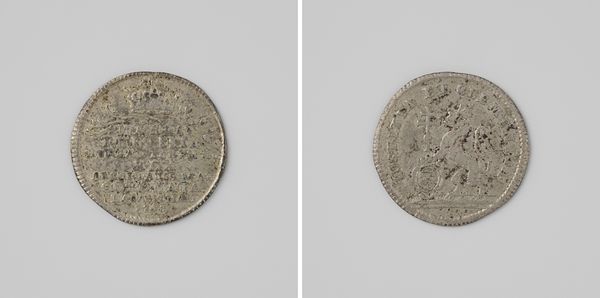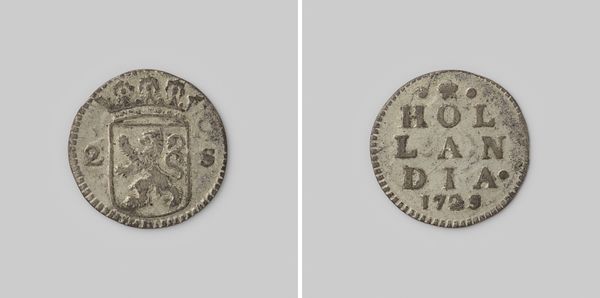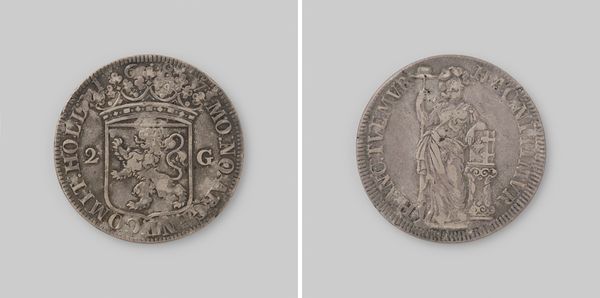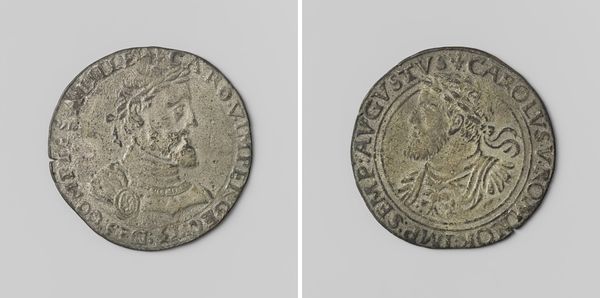
#
product photograph merchandise
#
natural stone pattern
#
decorative element
#
fashion mockup
#
old engraving style
#
product fashion photography
#
stoneware
#
graphic design product photography
#
product photography
#
layered pattern
Dimensions: diameter 3.8 cm, weight 21.21 gr
Copyright: Rijks Museum: Open Domain
Curator: This is a Dutch two-guilder coin from 1682, issued by the province of Holland. Editor: It looks so worn, like it's been clutched in countless palms over the centuries. There’s something romantic about that physical connection to history. Curator: Absolutely. Consider the context. In the 17th century, the Dutch Republic was a major player in global trade. Silver, the coin’s material, flowed in from the Americas, fueling this economic power. The craftsmanship of the coin itself reflects the precision demanded in a commercial hub. Editor: And look at the imagery. On one side, we see the crowned coat-of-arms of Holland with the lion rampant. Lions are nearly ubiquitous as emblems of royalty and courage— but why a lion? What deeper meaning did it hold for the Dutch at that time? Curator: The lion served as a powerful symbol of Dutch identity, a reminder of their strength in a time of ongoing struggles for independence. Think of the guilds and workshops involved in the minting of such coins – each step a contribution to building and projecting an identity. Editor: I'm particularly drawn to the figure on the reverse—a standing woman holding a spear or staff next to a pillar or altar, the Latin text circling around. That imagery invokes classical ideals, a connection to a long tradition of civilization and a message of stability. Curator: The choice of classical motifs highlights the aspirations of the Dutch Republic, evoking a sense of permanence and civic virtue. This symbolism on something as utilitarian as currency shows the deliberate integration of ideals into daily life. Editor: To hold such an object is to touch not only a moment in time, but also a whole symbolic vocabulary and an understanding of labor and the economy that created that system of communication. It is so much more than money. Curator: Indeed. It reflects an economic system in development, the social and historical climate in which this artifact was used, and is an exquisite piece of functional, historical record. Editor: Considering the weight of imagery and time that it contains, even this little piece has the power to teach.
Comments
No comments
Be the first to comment and join the conversation on the ultimate creative platform.
